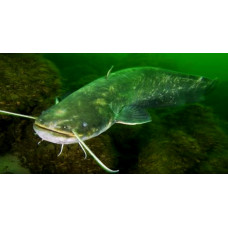Teleostei is an infraclass of ray-finned fishes. The most numerous group of fishes of the bony class. The internal skeleton is completely ossified. Scales are bony - cycloid or ctenoid, sometimes absent. Caudal fin is usually equal-lobed. Pelvic fins are located on the belly or under the pectoral fins or in front of them. Open- or closed-bellied fish. Fertilization is usually external. Separate-sexed, some hermaphrodites. Marine, brackish-water and freshwater fishes. The vast majority of fish - more than 20 thousand species, inhabit almost all water bodies of the globe.
Teleostei first appeared in the Middle Triassic, became abundant in the Cretaceous, and since the Cenozoic Era have spread everywhere, forming an extraordinary diversity of forms (more than 90% of living fish species).
Common features of Teleostei are bony scales (ganoid scales were in some extinct species), a greater degree of ossification of the brain skull (usually there is an upper occipital bone), a smaller number of bones in the lower jaw (usually 3), developed bony rays supporting the leathery edge of the gill cover. The caudal fin is homocercal. The arterial cone is reduced and functionally replaced by the aortic bulb. The intestine lacks a spiral valve. The swim bladder lacks cellularity on the inner walls; it is connected by a canal to the dorsal surface of the initial part of the esophagus; this connection may disappear in ontogeny; in some species the swim bladder is secondarily reduced. Numerous glands of the skin produce mucus, which reduces the friction of the fish body against the water, and also performs a protective function. In Teleostei noted progressive development of the central nervous system and sensory organs. In the inner ear of fish have three semicircular canals. Teleostei have mesonephric kidneys with ureters corresponding to the Wolff canals. A bladder is present. Typical for fish is pelagic coloration - a smooth transition from dark shades of the dorsal side to light shades of the ventral side.
In the vast majority of species, fertilization is external. They lay jelly-coated eggs (without horny coverings) in the water column or on underwater objects, and males irrigate them with seminal fluid. For the development of the embryo in the egg there is a reserve of nutrients (yolk). Development in most Teleostei is indirect (with transformation). From the egg some time after fertilization comes out of the larva. Unlike adult fish, the larva lacks paired fins, intestines do not function, and it feeds on nutrient reserves from the yolk sac located on the ventral side. Over time, the stock of yolk is exhausted and the larva acquires the ability to feed independently on various small organisms. She appears paired fins, and it turns into a young fish - a fry.
Teleostei inhabit almost all layers of the hydrosphere, inhabiting due to a wide range of osmoregulatory processes both fresh and salt water bodies, including deep water, whose inhabitants are well adapted to high pressure and lack of light. Some species, such as salmonids, are able to move from seas to fresh water bodies and vice versa during their lives. A number of physiological adaptations allow Teleostei to live in water bodies all over the planet.
The adaptations of Teleostei to different types and ways of feeding are diverse. These fishes include both carnivorous and herbivorous forms, there are even species parasitizing on other fishes; many species are characterized by mixed feeding.
Teleostei
Tags: teleostei


